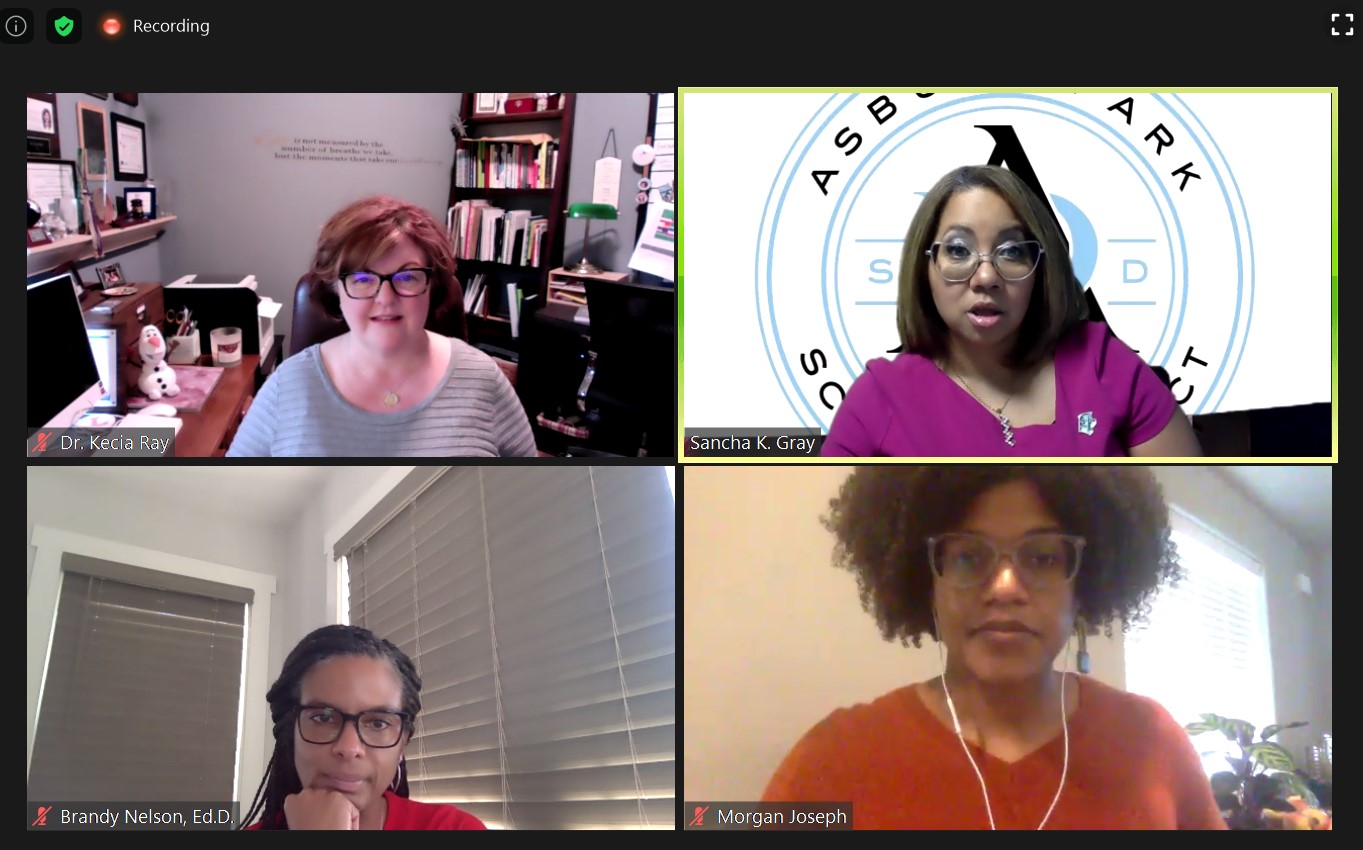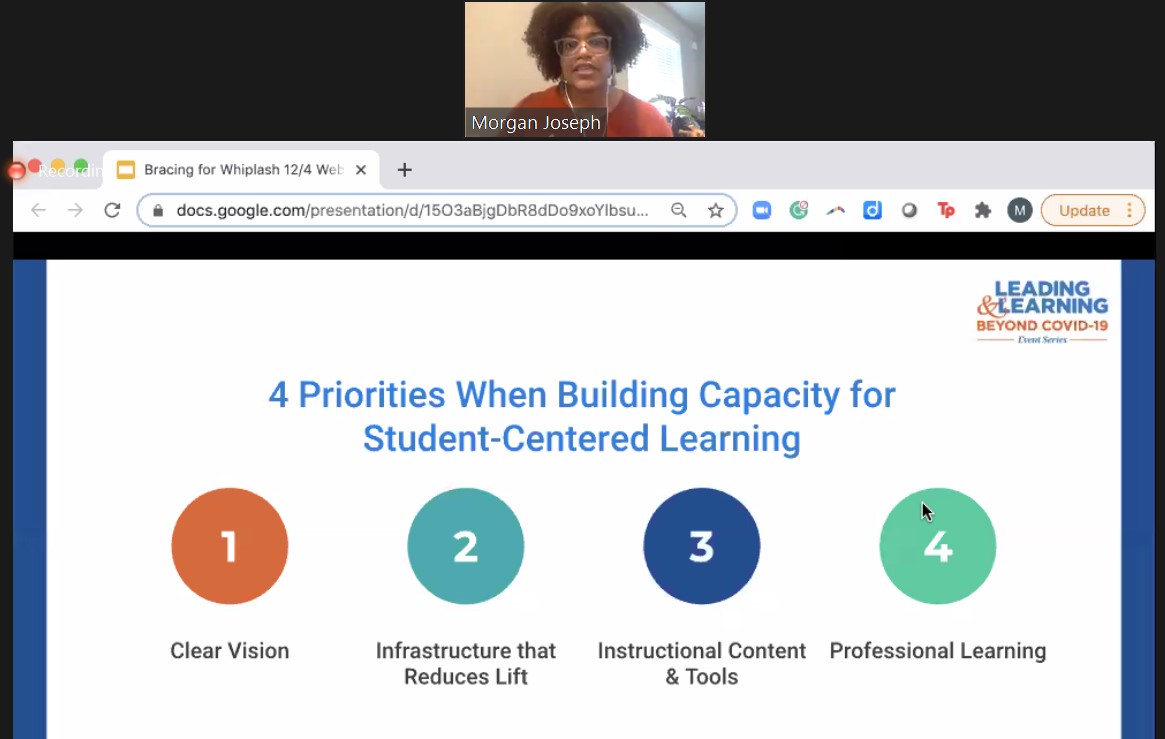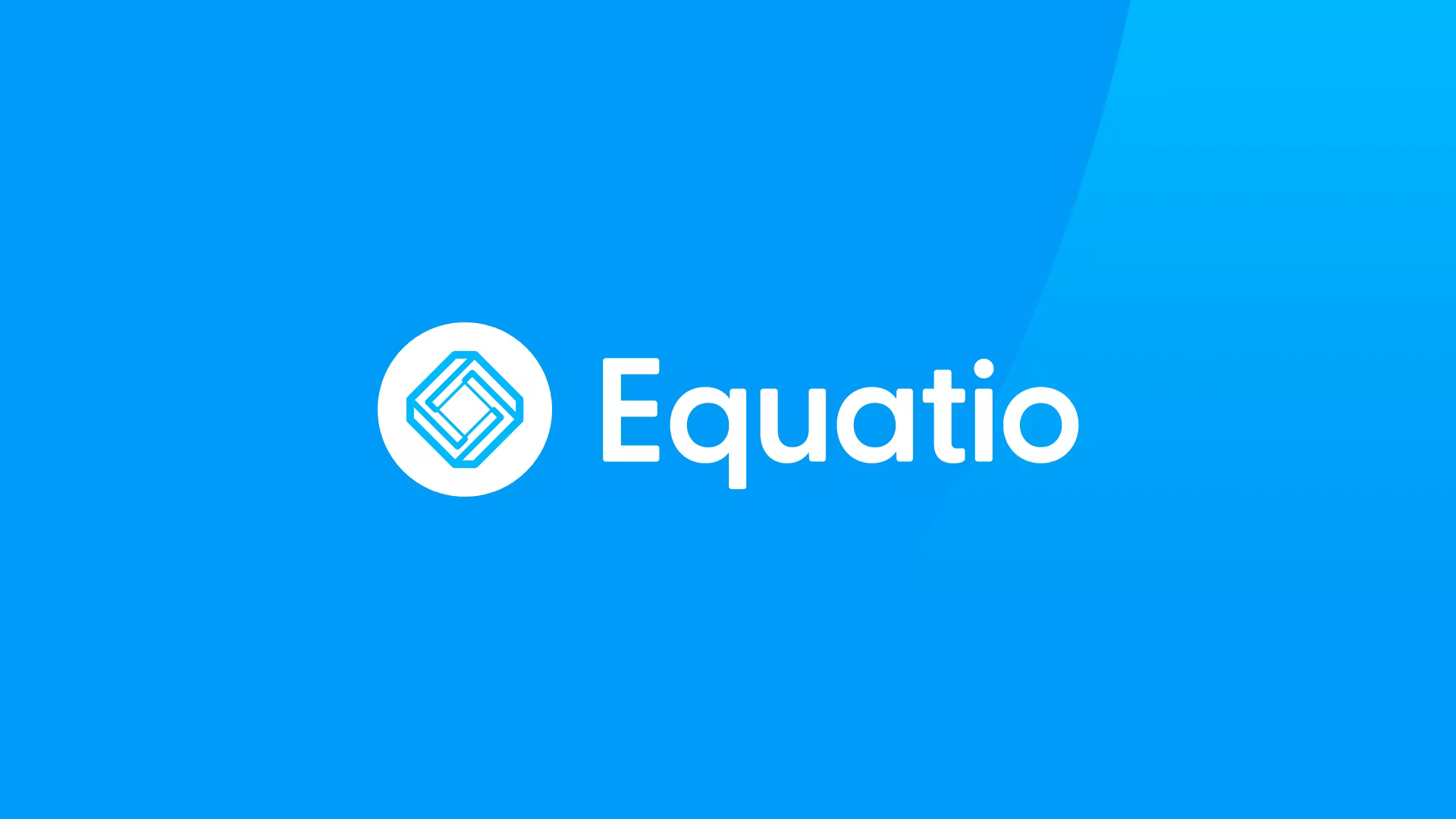Bracing for Whiplash: Helping Your Team Build Resilience for the Uncertainty to Come
Building a deeper understanding of how to move beyond crisis response and begin laying the foundations for the road ahead in education.

At the start of the 2020-21 school year, many districts had plans to return fully in-person before December. Now, with cases surging across the country and full vaccination still months away, alternative plans have been deployed. Regardless of your district’s current trajectory, there are strategies that can be used to support a smooth transition across any modality
In the first of a three-part free series, Dr. Kecia Ray recently talked with educators about building a deeper understanding of how to move beyond crisis response and begin laying the foundations for the road ahead in education. From the best practices of teaching and learning flexibly to the professional development needed, the conversation offered lots of practical insight and personal stories.
The on-demand version of the webinar can be found here
Key Takeaways
Opportunity moving forward. COVID has shown us that there can be an opportunity for growth, said Morgan Joseph, Director of Impact and Partner Marketing for BetterLesson. The pandemic has shown what is possible and that students can learn outside of schools under proper conditions. “We've also acknowledged that seat time doesn't necessarily equal learning time, and are finding different ways to address flexible learning models in which there is a synchronous learning,” said Joseph. “We've been talking about 21st-century instruction for probably a decade now, and this is maybe one of the first times we're at scale, addressing it and working through it head on.”
Front and center focus. In order to help students own their own learning, and to foster a student-centered learning environment, education leaders need to consider an approach that focuses on four main priorities: crafting a clear vision, developing an infrastructure that supports student-centered learning, providing the edtech tools and proper content, and offering the professional learning to support it all.

“If we're trying to create a learning experience where there's synchronous asynchronous data, and a really robust culture, we need to do the same thing for our teachers and leaders,” said Joseph. “We're going to spend probably nine to 12 months in these new flexible learning arrangements, so how can we take some of these skills and apply them when we come back to whatever this future normal is. What does instructional coaching look like at scale in a virtual context, and how do we build the capacity of people who are going to be leading these instructional shifts to lead their others with PLCs and other other group learning experiences done in house.”
Growing the learning. “How do we use those lessons we learned from when we moved into remote learning now that we’ve pivoted into a hybrid situation?” asked Sancha K. Gray, Superintendent of Schools at Asbury Park School District in New Jersey, a high-poverty district of nearly 2,000 students, 99% of whom are students of color. The digital divide is a significant part of the challenge the district faces, and it’s layered, said Gray--first, it’s access, then usage, and ultimately, empowerment. “So we're still trying to grow the learning of not only our students, but also of our parents around what it means,” said Gray. “We're educating the students and the parents simultaneously.”
Tools and ideas to transform education. Sign up below.
The district has also created a synchronous and asynchronous platform for instruction to accommodate students restricted by access that features flexible activities and portfolios that meet state education requirements.
A phased approach. When remote learning started at Charlotte-Mecklenburg Schools in North Carolina, which serves nearly 141,000 students who come from 183 countries and speak about 197 languages, the first thing leaders did was to set guiding principles, said Brandy Nelson, Executive Director, Learning and Teaching, Secondary. “We asked, ‘What does instruction look like in a remote setting?’ but also ‘What are we going to give, what are we going to let go out, and what are we going to go deeper around?’” said Nelson.
The district approached these issues in three phases--first, determining what tools they were going to use; next, building out the curricula and resources to support that; and finally, shaping a path for remote learning going forward, including the inclusion of data-driven decision making. “We don't have all the answers,” said Nelson. “We certainly are doing some pretty significant engagement with our with our staff at the district office and also with principals and teachers and instructional leaders around what this all means while at the same time, honoring people's wellness, their health and safety”
Eye on the learning. In regard to assessing the student learning experience, Nelson said they kind of had to “burn it to the ground” and develop new measurements and methods of collecting feedback. One challenge has been not being able to use traditional tools and trying to determine what new learning looks like, and what engagement looks like in a remote learning environment, especially difficult when only interacting through a screen. “You can’t tell a kid’s learning through their eyeballs!” said Nelson.
SEL supports. In Asbury Park, social-emotional learning has been a point of emphasis because communities of color and poverty struggle and need coping strategies, said Gray.
“We don't just layer on social and emotional learning as though it's just another thing we do,” she said. “It has become very entrenched in the delivery of instruction. We are continuing to provide yoga, mindfulness, and meditation in our virtual settings, and it's allowing the families that we serve to also have an opportunity to learn the strategies around how to deal with COVID fatigue, how to deal with isolation, and just how to deal with life.” Gray has also scheduled Sunday night meetings with the families of ELL students to provide extra SEL and remote learning support, and the district’s new report card integrates SEL skills as well.
Asbury Park is also providing SEL and additional PD for teachers in an effort to offer comprehensive and holistic support, and Gray is working hand-in-hand with the teacher’s union. “It’s not us against them, we’re all in this together,” Gray said.
Building coaching. In Charlotte-Mecklenburg, focus has been put on the written curriculum versus the talk curriculum, and how race, power, bias, and equity is handled in both areas, said Nelson. The district is providing PD to instructional coaches, teachers, and staff in regard to finding a common language, specifically around the remote learning experience, and building coherence across grade levels. The district has also been proactive in pursuing feedback from their coaches and involving them in PD. “They are on the front line, with respect to instruction, and so we want to continuously honor their capacity, celebrate and bring them into the fold by inviting them to really cool opportunities, so that they can extend their thinking and learning,” said Nelson.
One of the biggest trends in coaching is that people are discovering that it can be more effective and efficient in a virtual setting than in person, said Joseph.
“Something we've seen from our perspective is that there's been this reinvestment in coaching instructional leaders,” she said. “What are the foundational skills that we need to give them to be able to help be force multipliers, and scale these new initiatives and instructional practices. A lot of that is around what are the best practices, how do we make sure they're skilled, and how do we build a professional learning community in which a lot of different perspectives are brought into the fold.”
Lunch 'n Learn with Tech & Learning
We hope you can join us for these regular District Leadership Lunch ‘n Learn Roundtable series, hosted by Dr. Kecia Ray. In this events, districts from across the U.S. share their strategic plans, the challenges they are facing, and the creative solutions they are using to support students and teachers. Register for our upcoming event here.
More from T&L: Lunch 'n Learn roundtable recaps
Ray Bendici is the Managing Editor of Tech & Learning and Tech & Learning University. He is an award-winning journalist/editor, with more than 20 years of experience, including a specific focus on education.
